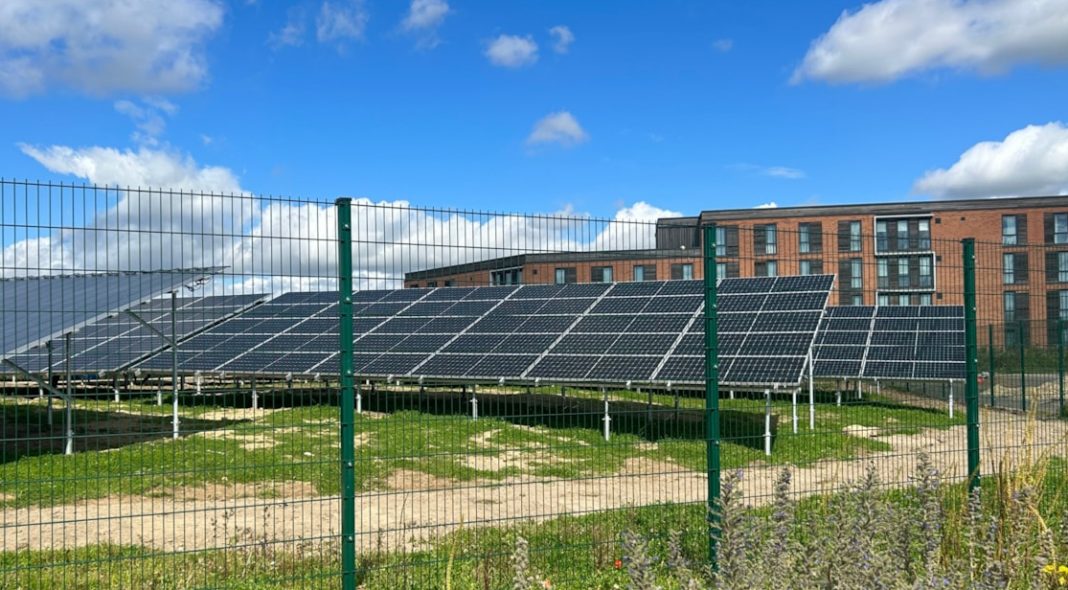Siemens has completed work on a 200kWp solar farm at the University of York’s new Institute for Safe Autonomy, as part of £1.5 million research project.
Funded through the UK Research Partnership Investment Fund, the project will enhance the Institute’s research capabilities to develop and test robots and other autonomous systems for the inspection and maintenance of solar arrays.
The solar farm will create a ‘living lab’ for the Institute to give insight to landowners and operators of solar farms on how best to integrate robotic technology in the field. It will also enable the Institute to become net zero for energy by 2025, generating power for more than 80 per cent of the building’s 600kWh expected daily use.
Siemens’ team supported through consultancy services helping to design, commission and optimise the solar arrays for the robotic technology being used as part of the institute’s research in addition to setting up a data collection system for the panels which will underpin research projects at the Institute.
The farm, which spans more than 1400 square metres, consists of a range of different panel configurations including static ground installations and a sun-tracking array. Some solar panels are also mounted onto the side of the Institute’s building and its rooftop as building-integrated photovoltaics (BIPV) to achieve wide range of installation positions.
It is one of nine projects that are set to improve environmental sustainability, thanks to almost £19 million of funding from UKRPIF.
Andrew Smyth, Head of Energy Performance Services at Siemens, said: “Through the solar farm the University will gain valuable insights to enhance the use of robotic technology, as we continue to look to integrate it into our everyday lives.
“We are seeing this technology deliver meaningful change across a range of industries and it will form a key pillar of our Transform 2024 conference as we bring together industry leaders to debate these key issues.”
Professor Miles Elsden, Director of the Institute for Safe Autonomy, added: “Robotics, autonomous systems and AI have the potential to transform the way we live, travel and work in the future. Integrating them with the production of renewable energy will ultimately play a key role in the journey towards net zero.
“This innovative research project marks an important milestone for the Institute since we opened earlier this year and reaffirms our commitment as a university to sourcing sustainable energy.”
The solar arrays were installed by LYNX Sustainable Solutions Ltd. The Institute for Safe Autonomy is a new initiative at the University of York which takes a safety critical approach to the design, development and testing of robotics and connected autonomous systems. The purpose-built facility was completed in summer 2022 and provides collaborative work and test spaces for more than 100 researchers across a variety of disciplines.



